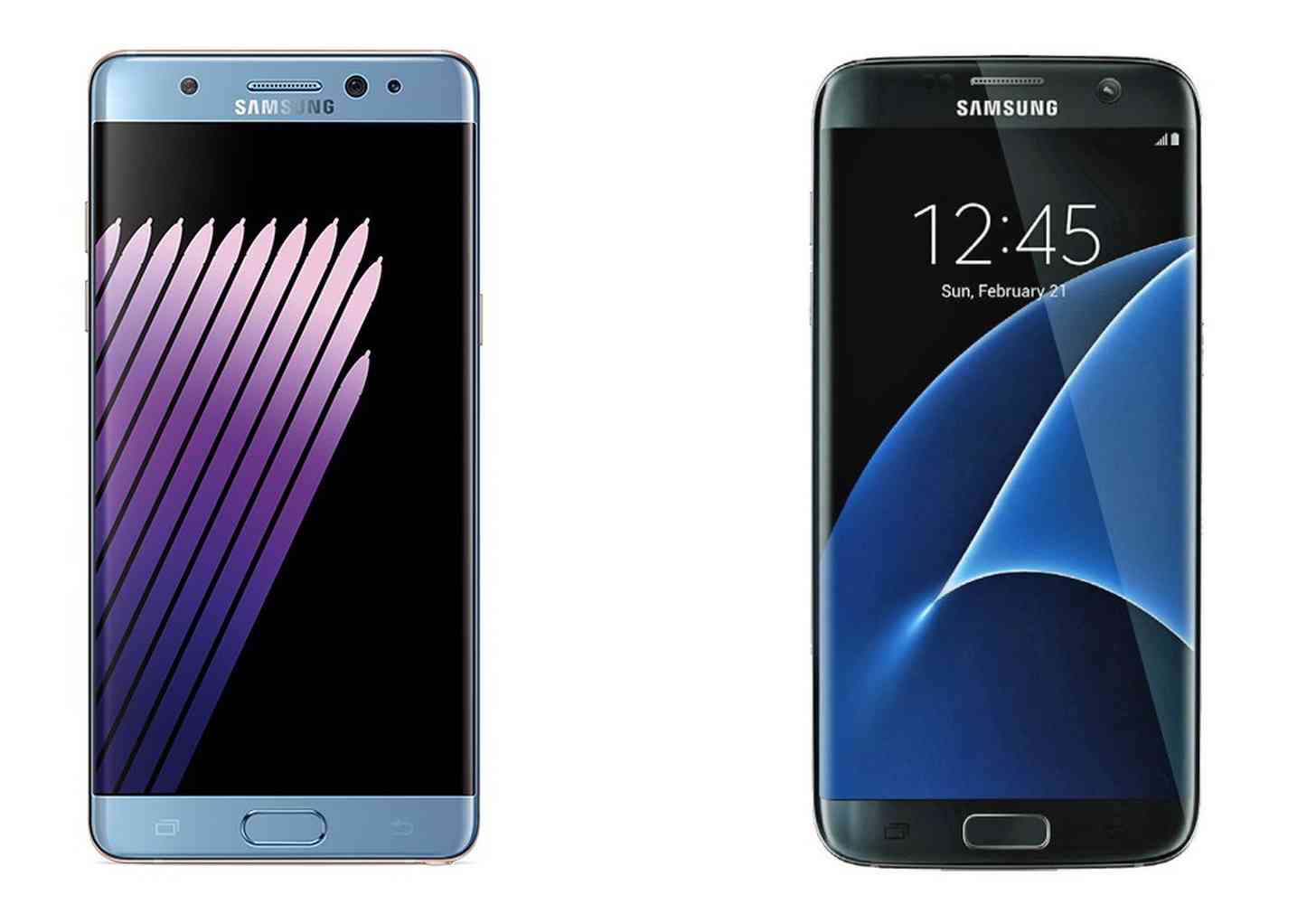
With the recent announcement of the Samsung Galaxy Note 7, those eager to upgrade may be wondering whether the Note 7 is a phone they want to buy. The Note 7 is surprisingly similar to the Galaxy S7 edge, so it can be hard to determine whether the Note 7 ends up being worth the extra money or not. I’ve compiled a written comparison between the two devices for those who have been debating which Galaxy flagship would work best for them. So, without further ado, let’s dive in.
The design of both devices are similar to each other, but there are some subtle differences. First and foremost, the Note 7 is slightly larger than the S7 edge on all fronts. It is taller, wider, thicker, and heavier than the S7 edge, which isn’t really saying much as both phones are on the thinner side anyway.
The S7 edge has steeper edges, whereas Samsung opted to refine the edges in the Note 7. The idea behind this decision is to keep the same bezel-less look, but reduce the amount of “accidental” palm registries that have been reported with the S7 edge’s design. Despite the smaller edges, the Note 7 keeps the Edge UX features, so you can still use Tasks, People, and Apps Edges, as well as Stock, News, and Sports, just like on the S7 edge. Reception of these changes have thus far been favorable for the Note 7.
The Note 7 also, of course, features the S Pen and S Pen dock on the bottom right hand corner of the device. Hopefully Samsung fixed the issue from last year’s Note 5, which caused the S Pen to become stuck if one inserted the pen the wrong way.
Honestly, most of the specs of the S7 edge and the Note 7 are identical. If you want the short version, the Note 7 is essentially the S7 edge with an S Pen, larger battery, iris scanner, and USB Type-C. For inquiring minds, there is a long version.
Both have the same resolution of 1440 x 2560 (although due to screen size differences, the S7 edge has higher PPI at 534 versus the Note 7’s 515). Both use the Snapdragon 820 processor (Stateside, at least; there’s also an Exynos 8890 version for the S7 edge, and possibly one for the Note 7), Adreno 530 GPU, 4GB of RAM, 12-megapixel f/1.7 rear-facing camera, 5-megapixel f/1.7 front-facing camera, Quick Charge 2.0 (the Note 7 will support Quick Charge 3.0 in some markets), and are IP68 waterproof/dustproof certified. Both also run on Android 6.0.1 (Marshmallow), but both will also eventually upgrade to Android 7.0 (Nougat).
The S7 edge offers 32 and 64GB internal storage variants, whereas the Note 7 only offers a 64GB variant (reports of a 128GB variant with 6GB of RAM are surfacing, however). Both support microSD cards up to 256GB.
The Note 7 also features an iris scanner in addition to a fingerprint scanner, although you apparently can’t use both together. The Galaxy S7 edge features a larger battery (3,600mAh versus the Note 7's 3,500mAh). Last but not least, the Note 7 features the S Pen, its defining feature.
I’m going to take a moment here to delve into the S Pen and why it’s so important. The thing about the S Pen is that some people swear by it, and some, like myself, find that they don’t necessarily use it as often as they thought they would. One can appreciate what the S Pen can do in the name of productivity, yet not find much of a use for it. This is one thing that surprised me when I tested out the Note 5 with Samsung’s Ultimate Test Drive earlier this year; I simply didn’t use the S Pen as often as I thought I would (however, being able to use the S Pen in Screen Off mode was actually pretty awesome). I will say that I appreciated the fact that the S Pen was there for when I did use it, but for me (a casual user) it wasn’t a make or break feature for me.
Anyway, back to the differences.
The last difference between the two is the price, which surprisingly isn’t as steep as many – myself included – had predicted. For the S7 edge, you can get one as cheap as $635 for the international 32GB version. For the U.S. version, some retailers charge as much as $795 full price. If you choose to purchase the Note 7, prices look to be around $835 - $880, depending on the carrier and where you buy it. For the U.S., the price isn’t really all that bad compared to what’s being charged from other U.S. carriers. For around $100 more, it’s actually a pretty good deal.
Those who choose to pay for the phone monthly will only see a few dollars’ difference between the S7 edge and the Note 7 (for example, on AT&T Next you would pay $26.50/mo. for the S7 edge, and $29.34/mo. for the Note 7).
It’s worth noting that the S7 edge has a record of frequent BOGO sales. I haven’t seen many BOGO deals for any of the Note devices, so if you’re looking to upgrade two devices you might get a (much) better deal with the S7 edge if you’re willing to wait for one of these sales to pop up again (which I imagine they will).
With all of the similarities and differences between Samsung’s two biggest flagships this year, readers, what are your thoughts? Are the subtle (yet significant) changes from the S7 edge to the Note 7 enough for you? Let us know your thoughts in the comments below!